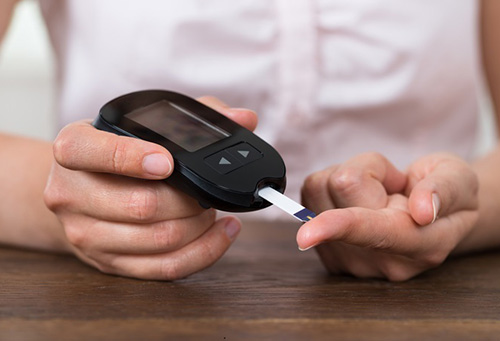Living with diabetes requires constant vigilance and management to maintain healthy blood sugar levels. One crucial marker for assessing blood sugar control is the A1C level. A1C, also known as glycated hemoglobin, provides a snapshot of average blood sugar levels over the past two to three months. In this blog, we’ll delve into the significance of A1C, explore various treatments aimed at managing it effectively, and discuss lifestyle changes that can contribute to better control of blood sugar levels.
Contents
What is A1C?

A1C is a blood test that measures the percentage of hemoglobin that is coated with sugar. Hemoglobin is a protein in red blood cells responsible for carrying oxygen throughout the body. When blood sugar levels are high, excess glucose binds to hemoglobin molecules, forming glycated hemoglobin. The higher the blood sugar levels, the more glycated hemoglobin is formed, leading to an elevated A1C level.
Understanding A1C Levels:
- Normal: Less than 5.7%
- Prediabetes: Between 5.7% and 6.4%
- Diabetes: 6.5% or higher
Why is A1C Treatment Important?
A1C treatment is crucial for individuals with diabetes due to several significant reasons:
- Risk Reduction of Complications: High A1C levels can cause complications in diabetes. These complications include heart disease, stroke, kidney damage, nerve damage (neuropathy), vision problems, and circulation issues. By managing A1C levels effectively, individuals can significantly reduce the risk of developing these serious health complications.
- Long-term Health Maintenance: Diabetes is a chronic condition that requires ongoing management to maintain overall health and well-being. A1C treatment plays a pivotal role in this by helping individuals keep their blood sugar levels within a target range over time. By achieving and maintaining optimal A1C levels, individuals can mitigate the long-term effects of diabetes and enhance their quality of life.
- Prevention of Acute Events: Fluctuations in blood sugar levels, especially when they are consistently high, can lead to acute events such as diabetic ketoacidosis (DKA) or hyperosmolar hyperglycemic state (HHS). These are serious and potentially life-threatening complications of diabetes. By managing A1C levels through appropriate treatment, individuals can reduce the risk of experiencing these acute events.
- Improved Management of Day-to-Day Symptoms: Elevated blood sugar levels can cause a range of uncomfortable symptoms, including increased thirst, frequent urination, fatigue, blurred vision, and slow wound healing. By effectively controlling A1C levels, individuals can minimize these day-to-day symptoms and improve their overall sense of well-being.
- Enhanced Treatment Efficacy: A1C serves as a valuable marker for assessing the effectiveness of diabetes treatment regimens. By regularly monitoring A1C levels and adjusting treatment plans accordingly, healthcare providers can ensure that individuals are receiving the most appropriate and beneficial therapies to manage their diabetes effectively.
- Promotion of Overall Health: Optimal blood sugar control through A1C treatment is not only essential for managing diabetes but also contributes to better overall health. By addressing A1C levels, individuals can reduce inflammation, improve cardiovascular health, support immune function, and lower the risk of other chronic conditions.
Different A1C Treatment Options
Managing A1C levels effectively is essential for individuals with diabetes to prevent complications and maintain overall health. There are several treatment options available to help lower and manage A1C levels. These options include:
Medications

Oral medications are often the first line of treatment for individuals with type 2 diabetes who are unable to achieve adequate blood sugar control through lifestyle modifications alone. These medications work in various ways to lower blood sugar levels and improve glycemic control.
- Metformin, for example, is commonly prescribed as it reduces glucose production by the liver and improves insulin sensitivity in peripheral tissues.
- Sulfonylureas and meglitinides stimulate insulin secretion from the pancreas, while thiazolidinediones enhance insulin sensitivity in muscle and adipose tissue.
- DPP-4 inhibitors, SGLT2 inhibitors, and GLP-1 receptor agonists work to lower blood sugar levels through different mechanisms, such as enhancing insulin secretion, inhibiting glucose reabsorption in the kidneys, and slowing gastric emptying.
Insulin therapy plays a crucial role in managing blood sugar levels for individuals with type 1 diabetes, as well as those with advanced type 2 diabetes who have beta-cell dysfunction and insulin resistance. Insulin therapy can help according to individual needs, with various types of insulin available to mimic the body’s natural insulin secretion patterns.
A rapid-acting insulin is used to control postprandial glucose levels, short-acting insulin covers meals, intermediate-acting insulin provides basal coverage, and long-acting insulin provides a steady baseline level of insulin throughout the day. Insulin can be administered via injections using syringes, insulin pens, or insulin pumps, allowing for flexible dosing regimens to match lifestyle needs.
Lifestyle Changes
Diet plays a central role in diabetes management, influencing blood sugar levels, weight management, and overall health. A balanced diet that emphasizes whole grains, fruits, vegetables, lean proteins, and healthy fats can help stabilize blood sugar levels and reduce the risk of complications associated with diabetes.
Carbohydrate counting, portion control, and glycemic index/load considerations are important strategies for individuals with diabetes to manage their diet effectively. Working with a registered dietitian or certified diabetes educator can provide personalized nutrition guidance and support to help individuals make sustainable dietary changes.
Regular physical activity is essential for improving insulin sensitivity, enhancing glucose uptake by muscles, and lowering blood sugar levels. Aerobic exercises such as walking, cycling, swimming, and dancing can help individuals with diabetes achieve and maintain target A1C levels.
Resistance training exercises, such as weightlifting or bodyweight exercises, can also be beneficial for building muscle mass and improving metabolic health. Individuals need to choose activities they enjoy and can incorporate into their daily routine to promote long-term adherence to an active lifestyle.
Weight management is a key component of diabetes care, as excess body weight is associated with insulin resistance and elevated blood sugar levels. Even modest weight loss can lead to improvements in glycemic control, blood pressure, and lipid levels. Sustainable weight loss strategies include adopting a balanced diet, increasing physical activity, practicing mindful eating, and seeking support from healthcare providers, dietitians, or support groups. Setting realistic goals and focusing on gradual, sustainable changes can help individuals achieve and maintain a healthy weight over time.
Continuous Glucose Monitoring (CGM)

Continuous glucose monitoring (CGM) systems provide real-time information about blood sugar levels, allowing individuals with diabetes to monitor their glucose levels more closely and make informed decisions about their diabetes management. CGM devices consist of a small sensor placed under the skin, which continuously measures interstitial glucose levels and a transmitter that sends glucose data to a receiver or smartphone app. Also, CGM systems provide data on glucose trends, patterns, and fluctuations, enabling individuals to identify hyperglycemia, hypoglycemia, and other glycemic patterns more effectively than traditional fingerstick glucose monitoring.
CGM technology offers several benefits for individuals with diabetes, including improved glycemic control, reduced risk of hypoglycemia, and enhanced quality of life. By providing real-time feedback on blood sugar levels, CGM systems allow for more proactive adjustments to insulin doses, medication regimens, diet, and exercise. CGM data can help to identify factors that affect blood sugar levels. These are such as meal timing, carbohydrate intake, physical activity, stress, and illness, enabling individuals to make lifestyle modifications to optimize glycemic control.
Continuous glucose monitoring can be particularly valuable for individuals with type 1 diabetes, those with type 2 diabetes who require intensive insulin therapy, pregnant women with gestational diabetes, and individuals with a history of severe hypoglycemia or hypoglycemia unawareness.
CGM technology is continuously evolving, with advancements such as integrated insulin pump systems (sensor-augmented pumps) and predictive algorithms (hybrid closed-loop systems) offering further improvements in glycemic management and ease of use. However, it’s essential for individuals using CGM systems to receive proper education and training on device operation, interpretation of glucose data, and integration into their diabetes care plan.
Education and Support
Diabetes education programs play a critical role in empowering individuals with diabetes to manage their condition effectively and make informed decisions about their health. These programs provide comprehensive education on various aspects of diabetes self-management, including blood glucose monitoring, medication management, nutrition, physical activity, stress management, and prevention of complications.
Diabetes education is typically delivered by a multidisciplinary team of healthcare professionals, including nurses, dietitians, pharmacists, and certified diabetes educators (CDEs).
Diabetes education programs can be offered in various formats, including individual counseling sessions, group classes, online courses, and self-directed resources.
Tailoring education and support to individual needs, preferences, and cultural backgrounds is essential for promoting engagement and adherence to diabetes self-care behaviors. Education programs may also incorporate behavioral strategies, such as goal setting, problem-solving, and motivational interviewing, to support behavior change and promote self-efficacy.
Other Therapies
In addition to traditional medications, lifestyle changes, continuous glucose monitoring, and education/support, several other therapies may be considered to help lower A1C levels in individuals with diabetes.
- Bariatric surgery is an option for individuals with severe obesity and uncontrolled diabetes, as it can lead to significant weight loss and improvements in glycemic control.
- Bariatric surgery procedures, such as gastric bypass and sleeve gastrectomy, alter the anatomy of the digestive system, resulting in reduced food intake, altered nutrient absorption, and metabolic changes that promote weight loss and diabetes remission.
Which A1C Treatment Method To Choose?

Choosing the most appropriate A1C treatment method involves considering various factors, including individual health status, preferences, lifestyle, and treatment goals. Here are some key factors to consider when selecting an A1C treatment method:
Type of Diabetes:
- Type 1 Diabetes: For individuals with type 1 diabetes, insulin therapy is essential, as their bodies do not produce insulin. Therefore, treatment typically involves multiple daily insulin injections or insulin pump therapy.
- Type 2 Diabetes: Treatment options for type 2 diabetes include oral medications, injectable medications (such as GLP-1 receptor agonists), insulin therapy, lifestyle modifications, or a combination of these approaches, depending on disease progression and individual needs.
Blood Sugar Levels and A1C Level:
- Individuals with higher A1C levels may require more intensive treatment approaches, such as insulin therapy or combination therapy with multiple medications, to achieve target A1C goals.
- Those with well-controlled blood sugar levels and lower A1C levels may be able to manage their condition with lifestyle modifications alone or with fewer medications.
Treatment Goals:
- Treatment goals may vary depending on individual preferences, age, comorbidities, and diabetes duration. Some individuals may prioritize avoiding hypoglycemia, while others may focus on achieving lower A1C levels to reduce the risk of long-term complications.
- Healthcare providers work with patients to establish personalized treatment goals based on factors such as age, life expectancy, risk of hypoglycemia, presence of complications, and individual preferences.
Medication Preferences and Tolerability:
- Some individuals may prefer oral medications over injectable therapies due to convenience, while others may be willing to use injectable medications or insulin if they offer better blood sugar control.
- Consideration should also be given to medication side effects, potential drug interactions, and individual tolerability when selecting a treatment method.
Lifestyle Factors:
- Lifestyle factors, such as diet, exercise habits, smoking status, alcohol consumption, and work schedule, can influence treatment decisions. For example, individuals with irregular meal patterns may benefit from flexible insulin regimens or medications that do not require strict timing with meals.
- Healthcare providers work with patients to develop individualized treatment plans that accommodate their lifestyles and preferences while optimizing blood sugar control.
Cost and Accessibility:
- Cost and insurance coverage may influence treatment decisions for some individuals. Healthcare providers can help identify affordable treatment options, including generic medications, patient assistance programs, or alternative therapies.
- Accessibility to healthcare services, medications, supplies, and support resources should also be considered when selecting a treatment method.
Conclusion
Managing A1C levels is a cornerstone of diabetes care, essential for preventing complications and promoting better health outcomes. Through a combination of medications, lifestyle changes, continuous monitoring, and education, individuals with diabetes can achieve and maintain optimal blood sugar control. By taking proactive steps to manage A1C, people can lead fulfilling lives while reducing the impact of diabetes on their overall well-being.
Remember, every effort to lower A1C, no matter how small, contributes to better health and a brighter future for those living with diabetes.
Do you want to get rid of diabetes? Join our online diabetes treatment program and reverse Diabetes naturally through lifestyle changes such as a Personalized Diet plan, Exercise, Yoga, dieticians, and health coaches.

